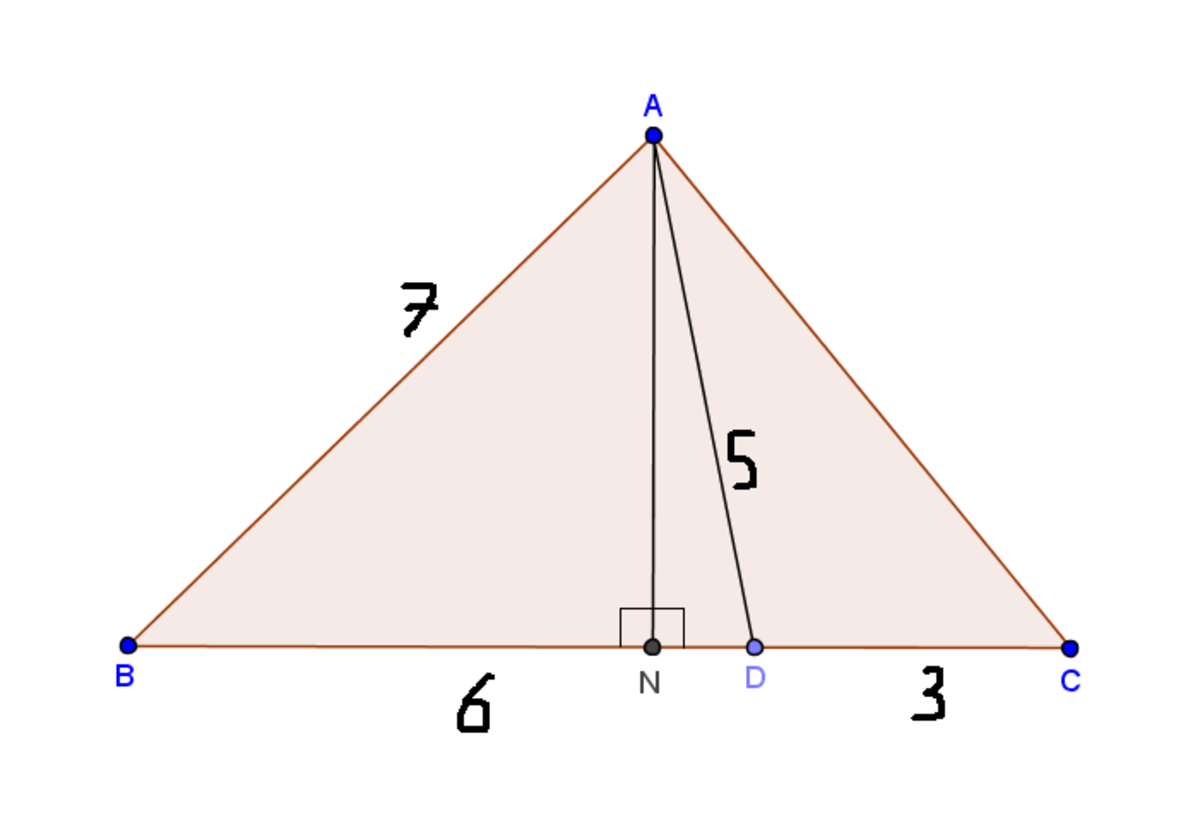Side Length of Triangle
Let D be a point on side B C of triangle A B C such that A B = 7 , B D = 6 , A D = 5 , C D = 3 . Then what is the square of the length of side A C ?
This section requires Javascript.
You are seeing this because something didn't load right. We suggest you, (a) try
refreshing the page, (b) enabling javascript if it is disabled on your browser and,
finally, (c)
loading the
non-javascript version of this page
. We're sorry about the hassle.
3 solutions
I did the same

In this diagram, we draw Δ A B C with the given data and we also draw a normal A N ⊥ B C . Next, we use Pythagoras Theorem for Δ A N B and Δ A N D to get the following equations:
A N 2 + B N 2 = A B 2 , A N 2 + N D 2 = A D 2 ⟹ A N 2 = A B 2 − B N 2 = A D 2 − N D 2 ⟹ 4 9 − B N 2 = 2 5 − N D 2 ⟹ B N 2 − N D 2 = 2 4 ⟹ ( B N − N D ) ( B N + N D ) = 2 4 ⟹ B D ( B N − N D ) = 2 4 ⟹ B N − N D = B D 2 4 = 6 2 4 ⟹ B N − N D = 4 … ( i )
Also, we have,
B C = B N + N D = B D + D C = 6 + 3 ⟹ B N + N D = 9 … ( i i )
Solving ( i ) and ( i i ) , we get B N = 5 , N D = 1 .
Now, using Pythagoras Theorem for Δ A N C , we have,
A N 2 + N C 2 = A C 2 ⟹ ( A D 2 − N D 2 ) + ( N D + D C ) 2 = A C 2 ⟹ A C 2 = ( 2 5 − 1 ) + ( 1 + 3 ) 2 = 2 4 + 1 6 ⟹ A C 2 = 4 0
Let ∠ A B C = θ . Using Cosine Rule, we have:
A D 2 = A B 2 + B D 2 − 2 ( A B ) ( B D ) cos θ
⇒ 5 2 = 7 2 + 6 2 − 2 ( 7 ) ( 6 ) cos θ ⇒ 8 4 cos θ = 6 0 ⇒ cos θ = 7 5
Also,
A C 2 = A B 2 + B C 2 − 2 ( A B ) ( B C ) cos θ
⇒ A C 2 = 7 2 + 9 2 − 2 × 7 × 9 × 7 5 = 1 3 0 − 9 0 = 4 0
It can be solved by appollonius theorem??? I did by that...
Log in to reply
No because it has not been given that AD is a median. So apollonius theorem can't be applied
Simplest solution yet. I did it using Stewart's Theorem, but wasn't sure how to use Law of Cosines here.
Use Stewart's theorem, that simplifies the problem.